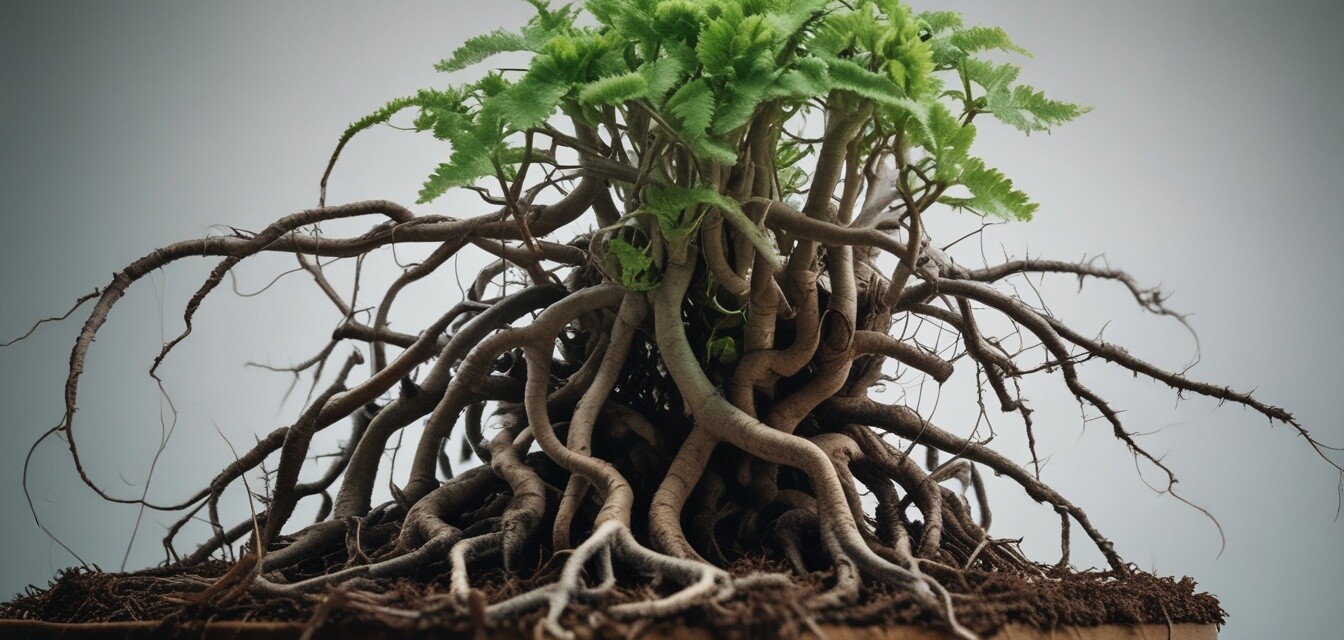
How to Recognize and Treat Root Rot in Houseplants
Key Takeaways
- Root rot is often caused by overwatering or poor drainage.
- Signs of root rot include yellowing leaves, drooping plants, and bad odors.
- You can treat root rot by removing the plant from its pot, trimming the damaged roots, and repotting in fresh soil.
- Prevent root rot by ensuring proper watering techniques and choosing the right potting mix.
Root rot is a common ailment among houseplants, which can devastate your plants if not addressed promptly. Understanding how to recognize root rot and knowing effective treatment options can help you save your cherished greenery. In this guide, we'll cover the signs to watch for, the causes of root rot, and the steps you need to take to treat and prevent it.
What is root rot?
Root rot is a serious condition that affects houseplants when their roots become brown, mushy, and decayed. This ailment can occur in both garden plants and indoor plants, but it is particularly troublesome in pots, where moisture can accumulate in the soil, leading to fungal infections.
Signs of root rot
Recognizing root rot early can help in saving your plants. Here are some common signs to look for:
- Yellowing leaves: One of the first signs is yellowing foliage, which can worsen over time.
- Wilting or drooping: Affected plants may lack firmness, appearing weak and droopy.
- Bad odors: An unpleasant smell emanating from the soil can indicate decaying roots.
- Soft roots: If you inspect the roots and find them mushy or dark, they may be rotting.
Causes of root rot
Several factors contribute to the onset of root rot:
- Overwatering: The most prevalent cause, leading to excess moisture in the soil.
- Poor drainage: Using pots with insufficient drainage holes traps water.
- Inconsistent watering: Going from extremely dry to extremely wet can shock the roots.
- Using contaminated soil: Soil that contains disease pathogens can promote rot.
Treatment for root rot
Follow these steps to treat root rot effectively:
- Remove the plant: Take the plant out of its pot gently to inspect the roots.
- Inspect and trim: Cut away any mushy or blackened roots using sterile scissors.
- Clean the pot: Sterilize the pot with a mix of bleach and water (1:10 ratio) before repotting.
- Repot in fresh soil: Use well-draining potting mix and repot your houseplant.
- Adjust watering habits: Water only when the top inch of soil is dry to prevent recurrence.
Preventing root rot
While treatment is essential, prevention is equally important. Here are key tips to keep your houseplants healthy:
- Choose a pot with adequate drainage holes to encourage healthy water flow.
- Use high-quality potting soil formulated for the type of plant you're growing.
- Monitor your watering schedule and adjust it according to the plant’s needs and the season.
- Consider using self-watering pots if you travel or forget to check your plants regularly.
When to seek professional help
If you’ve attempted treatment and your plant isn't recovering, it may be time to consult with a horticulturist or a local garden center for additional advice.
Pros of recognizing and treating root rot
- Saves your plants and prevents financial loss.
- Improves your plant care skills and knowledge.
- Helps you understand the specific needs of your plants.
Cons of ignoring root rot
- Can lead to total plant loss.
- May spread disease to other plants if not treated.
- Requires more effort to save the plant after severe damage.
Related Resources
For more information on caring for your houseplants, check out our other articles:
- Houseplant care tips
- Essential buying guides for houseplants
- Explore air-purifying plants
- Discover rare houseplants
- Find low-maintenance houseplants
Conclusion
Recognizing and treating root rot is crucial to maintaining the health of your houseplants. By understanding the signs and taking immediate actions, you can salvage most plants and prevent future occurrences. This knowledge empowers you to create a thriving indoor garden filled with vibrant greenery. Don't hesitate to explore our care tips for more useful information on keeping your houseplants healthy!

